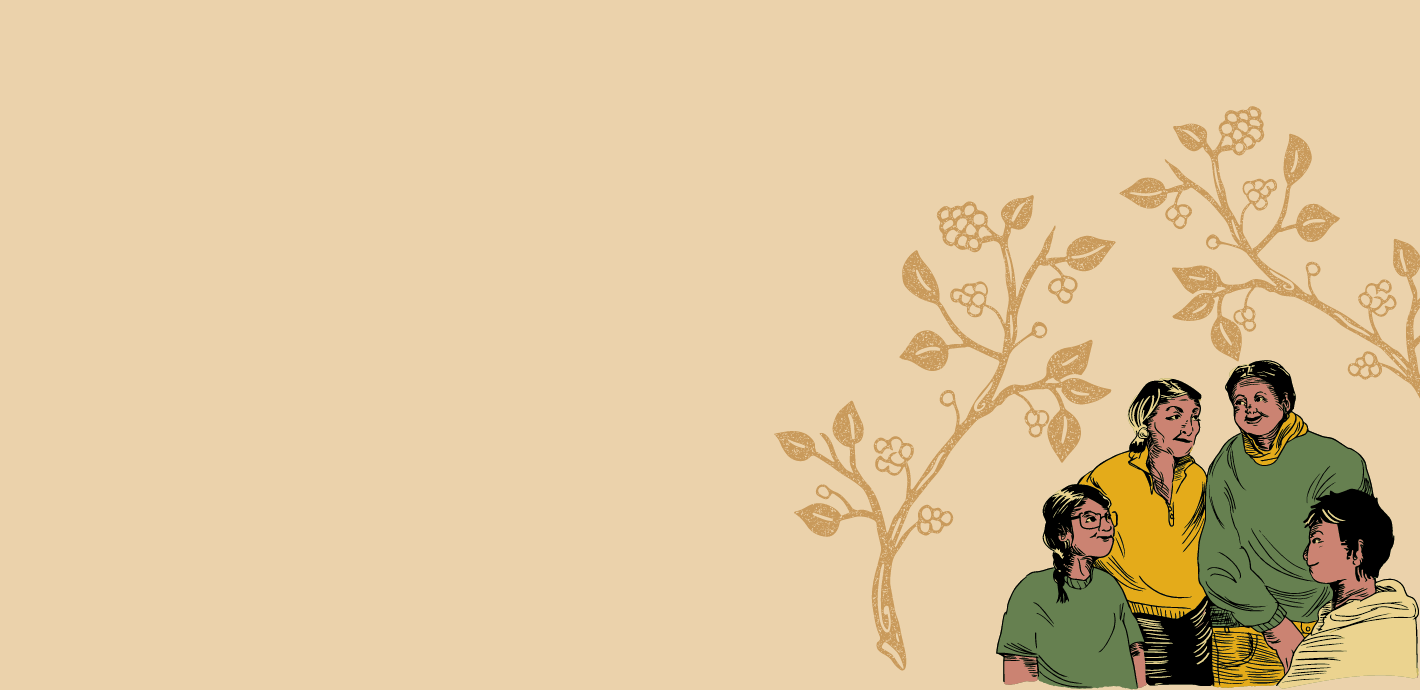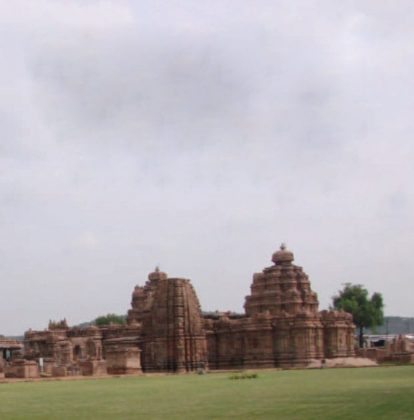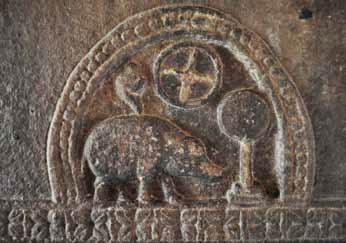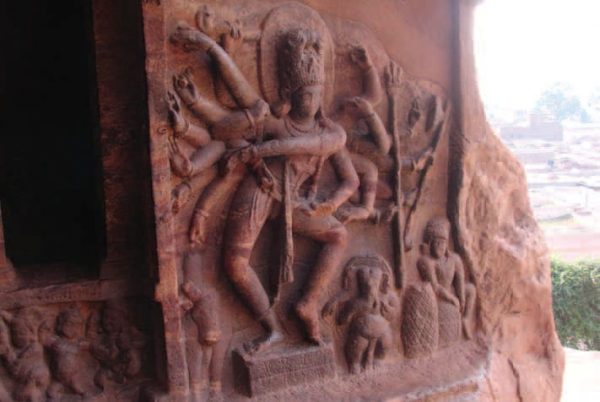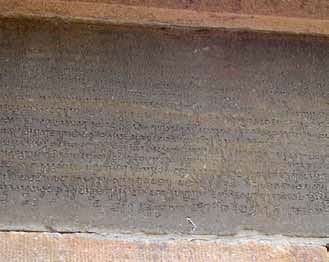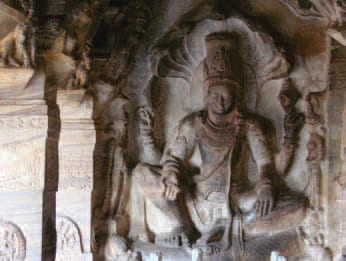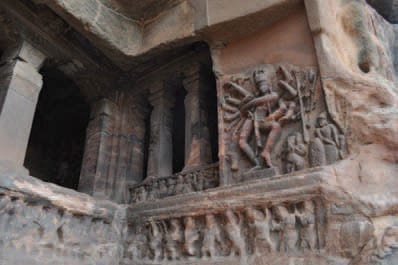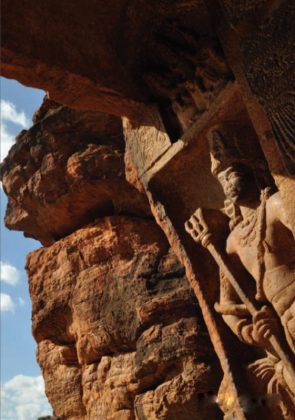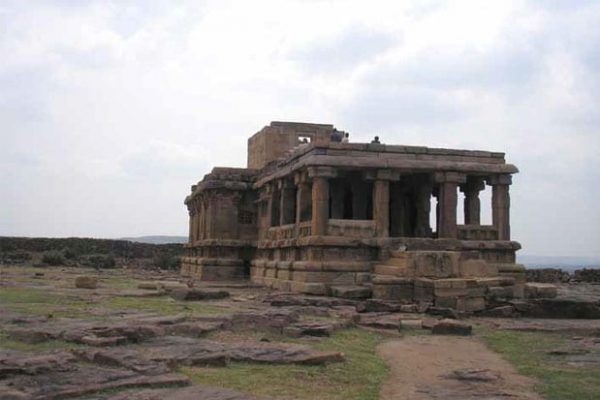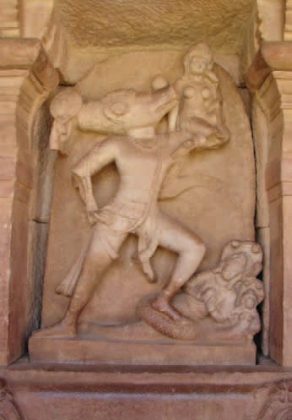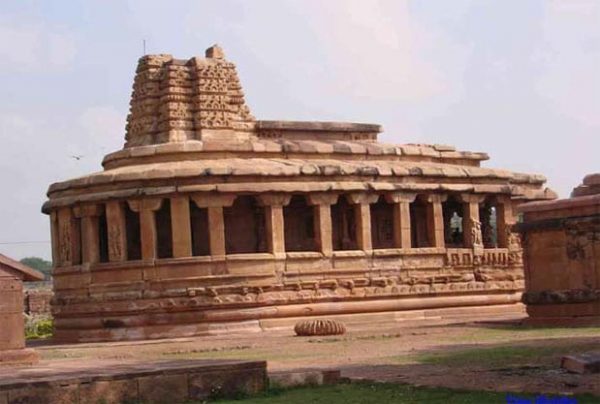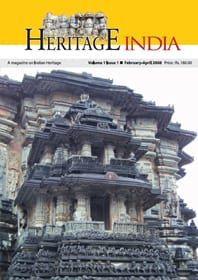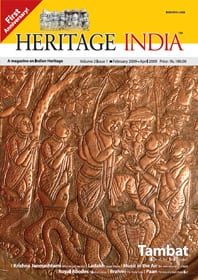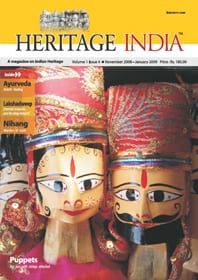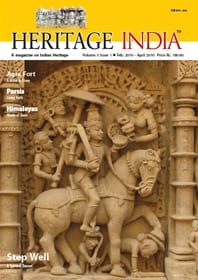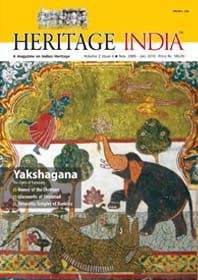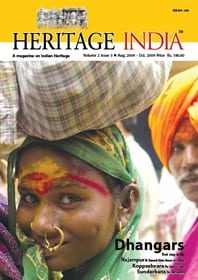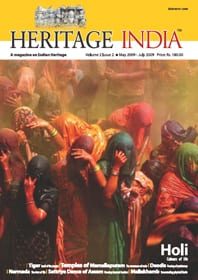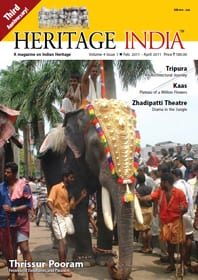Monuments of Western Chalukyas
Badami, Aihole & Pattadakal: These make up the oldest existing large scale set of Hindu temples in stone, revealing developing styles and materials. Created a thousand years ago and more, they remind us of the aesthetic spirit of the Western Chalukyas
Badami, in northern Karanataka, seems like just another bustling Indian town. Hawkers line narrow streets blocking entrances to tiny shops selling everything from toothpaste to hardware; cars jostling to establish rights over roads shared by pedestrians, cattle, and bullock carts. And in all that confusion and clutter all one has to do is look skywards and one will become immediately aware of the colossal red sandstone cliffs towering over the town. Everything else fades into the background. The cliffs, interesting to climbers and historians alike, house the famous cave temples of the Western Chalukyas accessible by a path snaking upwards from the town centre.
The four rock-cut caves of Badami, or ancient Vatapi, are part of a larger body of temple architecture that developed between the 6th and 8th centuries CE under the Western Chalukyas. Hundreds of monuments are strewn across the region concentrated at three main sites – Aihole, Badami (Vatapi) and Pattadakal – forming the oldest existing large-scale set of Hindu temples in stone.
Before the Chalukyas, Hindu temples were built with mud, plaster or wood that could not survive the ravages of time. The Western or Badami Chalukyas were the first to build extensively in stone. The dynasty came to power with Pulakeshi I securing land around Vatapi in 543 CE. The Chalukyas reigned for the next 200 years, reaching their zenith under Pulakeshi II(610-642 CE) who extended his empire’s boundary in all directions.
He conquered most of Deccan before turning towards the northern kingdom of Harshavardhana of Kanauj, famous as Uttarapatheshwara, Lord of the North. Harshavardhana, who lost a majority of his elephants, was forced to accept the Narmada as the southern boundary of his empire. Pulakeshi II then extended his rule southwards defeating the Pallava king Mahendravarman near Kanchi.
Under the Chalukyas, Deccan became the meeting point of the north and south. The kings, during their wars, became acquainted with different cultures. They brought home new ideas influencing how artisans built.
The unique architectural style that developed is called Western Chalukyan and combines elements of the northern Nagara and southern Dravidian styles, sometimes in the same monument. This was the beginning point of what came later. It shows us where temple architecture would go in the next 1,000 years.
This style is replicated by subsequent dynasties that made it bigger and more elaborate. The people who built the temples were from different backgrounds. Royal patronage was common, but the temples were also built by queens, subordinate kings, and wealthy citizens. The Chalukyan kings were initially Vaishnavites and later turned to Shaivism, so the temples are predominantly Hindu. But the presence of Jain and Buddhist temples suggests an attitude of religious tolerance.
The temples are significant also because of what they reveal to us. Inscriptions by the Chalukyas are brief and say little about their rule and life during their reign. The temples, therefore, are the only means by which we can understand this dynasty. The temples tell us a great deal about who these people were, where they went, what they did.
The three towns, Aihole, Badami and Pattadakal are along the Malaprabha River, a day’s walk from each other. The sites can be visited in a day and tour guides will often tell you that Aihole was the “school” where the artisans developed this new style, Badami was where the style was executed and Pattadakal where the building activity ultimately culminated.
The four cave temples at Badami appear like specks on the surface of the sandstone cliffs overlooking the ancient man-made still-used Lake Agastya. Dozens of steps lead to the first cave – a trying feat even in winter when the sun heats the sandstone to scorching temperatures. The first and lowest cave is dedicated to Shiva, the second and third to Vishnu and the highest cave to Jain Tirthankaras. Climbing to the highest cave takes a good hour but the view from the top is breathtaking – the plains of ancient Vatapi stretch for miles to the horizon, the site of the battle between Pulakeshi II and the Pallava king, Narasimhavarman, in 642 CE.
The Badami caves were possibly sculpted between the 6th and 8th centuries. They are similar in design with a courtyard on the cliff side and a main temple with a mukha mandapa (veranda), maha mandapa (pillared hall), and garbhagriha (inner sanctum). The light entering the shrine is limited by a blind bay of stone between the maha and mukha mandapa. Other architectural ties to the Deccan are seen in the layout of the columns – in all four caves the central pair is set wider than the others giving a longitudinal appearance similar to Ellora caves. The pillars are adorned with kirtimukhas, demonic faces with fangs.
The first cave, in addition, has a shrine alcove at right angles to the entrance. The most outstanding feature of the cave is the sculpture of Shiva as Natarajain the veranda. Nataraja, with 18 arms is accompanied by Nandi, Shiva and Parvati’s gatekeeper, and Ganesha, Shiva and Parvati’s son. A sculpture of Harihara (a syncretic form of Shiva and Vishnu) and Shiva ardhanari (a syncretic form of Shiva and Devi) grace the maha mandapa with a panel of ganas (gamboling dwarves) at the bottom.
Further up is Cave 2 dedicated to Vishnu as Trivikarma, a title earned when Visnhu conquered all three worlds. The garbhagriha houses Trivikarma with one foot on the earth and the other towards the sky and its doorway is carved with Padma and Shankha Nidhi, the lotus flower and conch. Though the exterior of the cave is simple, the inside is profusely carved with dvarapalas (door guardians) and Vishnu as Trivikarma and Varaha (Vishnu in the form of a Boar).
Cave 3 is the biggest and the most elaborate and its 70 foot veranda is larger than the verandas of Cave 1 and Cave 2. This cave is also the most easily dated; an inscription on a pilaster states it was dedicated by king Mangalesa to his brother king Kirtivarman, in 578 CE. The inscription is next to Varaha, the Chalukyan symbol, and researchers believe the rulers considered themselves incarnations of Vishnu and protectors of the earth. The carvings in this cave are fine and in greater detail than earlier Gupta art. The base of each pillar is decorated with pairs of ganas (dwarfs) and hamsa (swans) in between, a feature appearing in Chalukyan architecture henceforth. The top has mithunas (couples in amorous poses).
Vishnu appears in various forms in niches around the cave but the most impressive one is on the left end of the veranda where he is seated on Shesha, the serpent. Cave 4 is the highest of all and an example of the prevalent religious tolerance. It is dedicated to the Jain Tirthankara, Mahavira, and carvings of Parvati appear alongside Mahavira. The cave is simpler and smaller than the others and lacks the gana panel and maha mandapa.
The cave temples of ancient Vatapi were the initial phase and from this evolved the free-standing monuments. However, these two phases probably overlapped for several decades so a cave was carved out simultaneously as a temple was built. Aihole, researchers think, was where the experiment began. It was the first capital of the Chalukyas and a massive city wall still surrounds this little town.
There are about 150 temples, some in clusters, with the Meguti Hill to the south dominating the landscape. Crowning the hill is the Meguti temple, which is dedicated to the Jain Tirthankara, Neminatha. Considered to be a landmark of south Indian architecture, the temple is like the earlier caves of Vatapi. It has a panel of ganas and animals at its base and like the temples of the Gupta period its exterior is austere.
Outside is an inscription, which says that it was built in the Shaka era 556 (around 634 CE) by Pulakeshi II to mark his victory over Harshavardhana. This indicates that the temple was built at the same time as other monuments with ornate exteriors and is an anomaly in the general trend towards increasingly elaborate outsides. Like earlier Chalukyan temples, this monument has been constructed from stone blocks without mortar.
It has a pradakshina patha (the circumambulation path around the shrine) interrupted by six walls one of which closes off the path. The door frame of the shallow mandapa is decorated with a garland of kutas (miniature shrines) and the garbhagriha door is plain.
To the southeast of the Meguti Hill is a Jain cave believed to be the connection between the Badami caves and the typical structure seen at Ravana Phadi cave to the north of Aihole. The veranda has sculptures of Tirthankaras similar to the ones in the Jain cave at Vatapi and the shrine boasts a seated Mahavira. The Ravana Phadi cave was carved around 550 CE from a boulder slightly above field level on the banks of a natural stream. The plan of the cave suggests its relation to Hindu monuments in Maharashtra but the sculptures inside are distinct even though they may have been influenced by art from other regions.
The interior of the cave – its central hall, two side shrines and sanctuary at the back as well as the ceilings – is profusely carved. The temple has a simple façade with a basement panel of ganas, sculptures of Padma and Shankha Nidhi and two dvarapalas in Scythian dress. The most prominent sculpture is probably of Shiva as Nataraja at the left of the main hall. On Nataraja’s sides are human-size carvings of saptamatrakas (Seven Mothers) created to aid the Lord of Dance in his defeat of the demon Andhakasura.
The slender bodies of the sculptures, the high headgear, and the garment style differ from the full-bodied sculptures of the Vakatakas of western Deccan who ruled from the third to fifth century. At the same time they do not resemble the southern school of art and have their own individuality. The Ravana Phadi marks the mid-century beginning of Chalukyan cave architecture and Cave 3 at Badami its culmination in 578 CE. To the southwest of the Ravana Phadi cave is the Durga temple, the most discussed and written about Chalukyan monument.
This ornate temple was built by Komarasinga, a leading member of the famous merchant guild – Ayyavole Five Hundred. The similarity of carvings between this temple and Alampur, Andhra Pradesh, suggest it was built in the late seventh, early eighth century. The temple is a classic example of how the Chalukyas combined elements from the north and south. Like the Svarga Brahma temple at Alampur, the temple is divided into an entrance, pillared hall, and shrine.
Its apsidal-shape, though not common, is seen in some monuments in the area. The small shikhara (the tower over the sanctum) resembles north Indian monuments; two staircases flanking the front lead to the entrance. On the sides of the doorway are the two river goddesses – Ganga and Yamuna – purifying the path into the temple. Along the base of the inner porch is a frieze depicting the Ramayana, perhaps a tribute to the battles won by the Chalukya kings.
The passageway around the sanctum has several niches with carvings of Shaivite and Vaishnavite deities, the most prominent being that of an eight-armed Durga with her lion and the demon Mahisha in the form of a buffalo. The Durga temple intrigues researchers, but the Lad Khan temple further south puzzles them. It is unique in many ways – its square shape with a small rear shrine resembles a village meeting hall rather than a temple. Its exterior is plain but striking with latticed windows and its roof is made of stone slabs resembling timbers in a wooden building. As yet, there is a lack of agreement about who the temple is dedicated to or when it was built. The small linga in the back and the Nandi bull were probably later additions.
Author: Sena Desai Gopal
Photographs © Kim Yongjun, Shreekant Jadhav, Vijay Ghodekar, Shilpa Wadekar
Source: Excerpt from original published in Heritage India Issue 4, Vol 3

